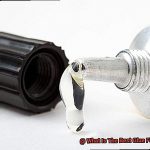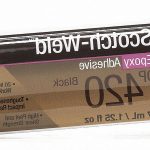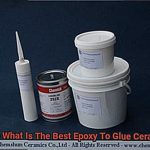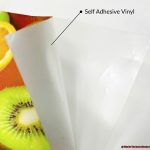Are you tired of seeing your metal surfaces rust and deteriorate over time?
Maybe you have a metal roof or gutters that need sealing, or perhaps you’re looking to protect your outdoor metal furniture. Whatever the reason, finding the best external waterproof sealant for metal is crucial.
Lucky for you, we’ve got all the information you need to keep your metal surfaces looking new for years to come. In this article, we’ll explore why it’s important to use a sealant on your metal surfaces and how to choose the right one for your needs.
We’ll also recommend some top-rated products on the market so that you can make an informed decision. Whether you’re a homeowner wanting to protect your investment or a business owner in need of a durable solution, we’ve got you covered.
So, let’s get started and discover the best external waterproof sealant for metal.
What is Metal Sealant?
Contents
- 1 What is Metal Sealant?
- 2 Different Types of Metal Sealants
- 3 Advantages and Disadvantages of Silicone Sealant
- 4 Advantages and Disadvantages of Polyurethane Sealant
- 5 Advantages and Disadvantages of Epoxy Sealant
- 6 Factors to Consider When Choosing a Metal Sealant
- 7 Tips for Applying Metal Sealants Properly
- 8 Common Issues with Metal Sealants and How to Avoid Them
- 9 Conclusion
Look no further than metal sealant. It’s an adhesive that is designed to bond and seal metal surfaces, preventing any penetration of harmful elements. Metal sealant is a crucial component in many industrial and construction applications that require a waterproof and durable sealant for metal surfaces.
There are several types of metal sealants available on the market, each with its unique properties and advantages. The most popular options include silicone-based sealants, polyurethane-based sealants, and epoxy-based sealants.
Silicone-based sealants are known for their flexibility and resistance to temperature changes, making them an excellent choice for outdoor use. However, they may not adhere well to certain types of metals such as copper or brass.
Polyurethane-based sealants offer excellent adhesion and durability. They are resistant to water and chemicals, making them suitable for use in marine environments. However, they may take longer to cure compared to other types of sealants.
Epoxy-based sealants are another great option for high-stress applications due to their exceptional strength and chemical resistance. They provide excellent adhesion and can be used on a variety of metals, including aluminum, steel, and copper.
It’s essential to choose the right type of metal sealant depending on specific application requirements and the metal surface’s condition. Metal sealants come in various forms such as liquids, pastes, tapes, or films. For example, liquids and pastes are ideal for filling gaps or cracks in metal surfaces, while tapes or films are suitable for sealing joints or seams.
Different Types of Metal Sealants
When it comes to sealing metal, the right choice of sealant can make or break a project. With so many options available, it’s important to understand the unique properties and benefits of each type.
Silicone sealants are a popular choice for sealing metal due to their flexibility and high resistance to temperature, UV rays, and chemicals. They’re ideal for outdoor use and work well for sealing joints and cracks. However, they require a clean surface for proper adhesion and may not adhere well to all types of metal.
Polyurethane sealants offer exceptional strength and durability, making them ideal for harsh environments like marine applications. They’re resistant to water and chemicals and can withstand extreme temperatures. However, they may be more expensive than other types of sealants.
Epoxy sealants provide a strong bond that can withstand harsh weather conditions and extreme temperatures. They’re versatile enough to use on a variety of metals but require proper mixing for the best results. Epoxy sealants are ideal for industrial and residential applications alike.
Polyester resin is another option that cures quickly and forms a strong bond while being resistant to water and chemicals. However, they may be more brittle than other types of sealants, making them better suited for indoor use.
Acrylic sealants are easy to apply and cure quickly. They’re resistant to UV rays, making them ideal for outdoor use. While they may not be as strong as other types of metal sealants, they’re cost-effective and work well for indoor projects.
Butyl sealants offer excellent flexibility and adhesion properties, making them ideal for sealing metal roofing seams, pipes, vents, and other outdoor surfaces. They create a tight seal that can withstand harsh weather conditions.
Advantages and Disadvantages of Silicone Sealant
Silicone sealant is an excellent option. It is a popular choice due to its exceptional waterproofing capabilities, making it ideal for external use. But before you make your final decision, it’s crucial to consider the advantages and disadvantages of silicone sealant.
Advantages:
- Waterproofing: One of the most significant advantages of silicone sealant is its ability to prevent water from getting through. This feature makes it the go-to sealant for outdoor use.
- Temperature resistance: Silicone sealant can withstand high temperatures, making it perfect for areas that are exposed to heat.
- Flexibility: It is flexible and can stretch without breaking, which is why it’s perfect for areas where there is movement or vibration.
- Long-lasting: Once applied, silicone sealant can last for many years without needing replacement.
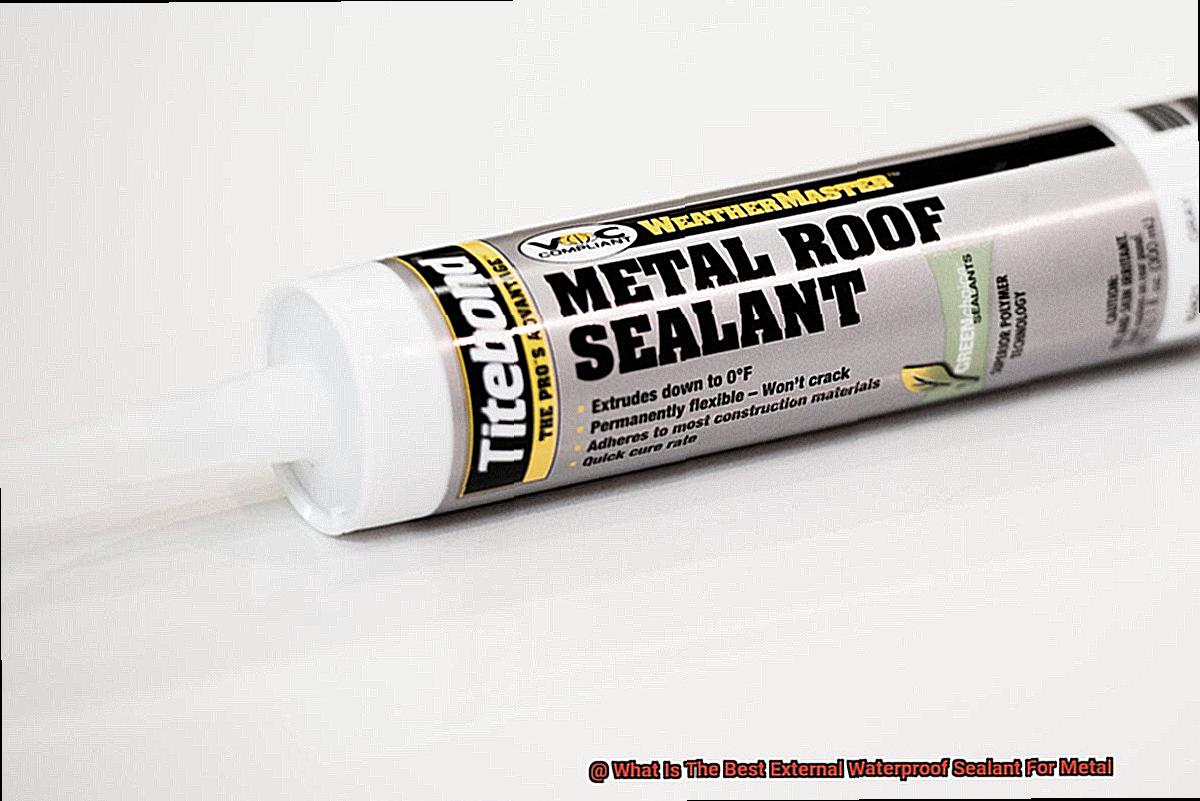
Disadvantages:
- Adhesion: However, it does not adhere well to some metals like aluminum or copper without a primer, which can be a drawback if you’re working with these materials.
- Curing time: Silicone sealant takes longer to cure than other types of sealants. This means that the area being sealed must be left undisturbed for a longer period.
- Not paintable: Another disadvantage is that silicone sealant cannot be painted over. So, it may not be suitable for applications where appearance is important.
- Odor: Finally, some people may find the odor of silicone sealant unpleasant.
Overall, silicone sealant is an excellent choice for external waterproofing of metal surfaces due to its effectiveness and durability. But it may not be suitable for all applications because of its adhesion issues and curing time. Therefore, it’s crucial to consider these factors before selecting a sealant for your specific application.
Advantages and Disadvantages of Polyurethane Sealant
If so, polyurethane sealant may be the perfect solution for you. As an expert in this field, I’ve done some research and compiled a comprehensive list of advantages and disadvantages of using this type of sealant.
Let’s begin with the positives. One of the most significant advantages of polyurethane sealant is its excellent waterproofing properties. This synthetic polymer creates a strong barrier that prevents water from penetrating metal surfaces, making it perfect for outdoor applications. It also has remarkable flexibility, allowing it to expand and contract with the metal surface without cracking or breaking. This feature makes it ideal for areas that experience temperature changes or vibrations.
Another benefit of polyurethane sealant is its superior adhesion properties. It bonds exceptionally well with different metals like aluminum, steel, copper, and brass, creating a tight seal that prevents moisture from seeping in and causing damage.
Lastly, durability is another major advantage of polyurethane sealant. It can withstand UV rays, chemicals, and abrasions, making it a top choice for industrial applications that require long-lasting protection.
However, as with any product, there are also some drawbacks to consider before deciding if polyurethane sealant is right for your project. Firstly, it takes longer to dry than other types of sealants. Depending on the temperature and humidity levels, it may take up to 24 hours to cure fully.
Additionally, applying polyurethane sealant requires specialized equipment like caulking guns. Improper application can lead to uneven coverage or air pockets that compromise its effectiveness. Finally, it’s worth noting that polyurethane sealant is more expensive than other types of sealants due to its high durability and effectiveness.
Advantages and Disadvantages of Epoxy Sealant
Epoxy sealant is the superhero of sealants for metal surfaces. It is a two-part adhesive that consists of an epoxy resin and a hardener, creating a strong and durable bond that can withstand extreme temperatures, chemicals, and moisture. So, what are the advantages and disadvantages of using epoxy sealant on metal surfaces?
Advantages:

- Provides long-lasting protection against corrosion: Epoxy sealant creates a barrier between the metal surface and the outside environment, preventing moisture and other corrosive substances from coming into contact with the metal. This makes it an ideal choice for use in outdoor environments where metal surfaces are exposed to rain, humidity, and other harsh conditions.
- Versatile: Epoxy sealant can be used on a wide variety of metal surfaces, including steel, aluminum, copper, and brass. Additionally, you can use it on other materials such as wood, concrete, and plastic. This makes it a popular choice for both industrial and home use.
Disadvantages:
- Long curing time: Epoxy sealant can take several hours or even days to fully cure, depending on the temperature and humidity levels in the environment. This can be inconvenient if you need to use the metal surface immediately after applying the sealant.
- Expensive: Epoxy sealant can be more expensive than other types of sealants such as silicone or polyurethane. This may make it less accessible for those on a tight budget.
- Difficult to apply evenly: Epoxy sealant requires careful mixing of the two parts to ensure that it cures properly and forms a strong bond with the metal surface. Improper mixing or application can result in weak spots or bubbles in the sealant.
Factors to Consider When Choosing a Metal Sealant
Choosing the right sealant for your metal can be tricky, but considering a few key factors can help you make an informed decision.
Firstly, consider the type of metal you will be sealing. Each type of metal has unique properties, and some sealants may not be compatible with certain metals. For instance, some sealants may corrode or react with particular metals, which could cause damage or failure. Therefore, it’s vital to choose a sealant that is compatible with the type of metal you will be using.
Secondly, think about the environment in which your metal will be used. If it will be exposed to harsh weather conditions like rain, snow, or extreme temperatures, a more durable and weather-resistant sealant will be necessary. The right sealant can help protect your metal from corrosion and damage caused by environmental factors.
The application method is another crucial consideration. Some sealants come in spray cans or tubes for easy application, while others may require mixing or specialized equipment for proper application. Choose an application method that suits your needs and abilities to ensure proper application and maximum effectiveness.
The intended use of the metal is also essential to consider. For high-pressure or high-temperature applications, a sealant that can withstand these conditions will be necessary. Specific sealants are designed to withstand specific types of use, so make sure to select one that will meet your needs.
Lastly, cost is always a factor to consider. There are many different metal sealants available at different price points. While cost is important, it’s essential to find one that fits within your budget while still meeting your needs.
Tips for Applying Metal Sealants Properly
Metal sealants are essential for protecting metal surfaces from water damage and corrosion. However, applying them properly is key to ensuring a long-lasting and effective seal. Here are five sub-sections with tips on how to apply metal sealants properly:
Thoroughly clean the surface
Cleaning the surface before applying the sealant is crucial. Dirt, grease, or moisture can prevent the sealant from adhering properly, leading to leaks or corrosion over time. Therefore, use a degreaser or solvent to clean the surface and allow it to dry completely before applying the sealant.
Select the right type of sealant
Different types of sealants are suitable for different types of metal surfaces. For outdoor use, silicone-based sealants are often the best choice as they are flexible and can withstand extreme temperatures. Polyurethane-based sealants are ideal for marine environments as they are resistant to water and chemicals. Epoxy-based sealants provide excellent adhesion and can be used on a variety of metals including aluminum, steel, and copper.
Use the appropriate applicator
Depending on the type of metal sealant you’re using, you may need a specific type of applicator. For example, some sealants may require a brush or roller, while others may be applied with a caulking gun or spray. Make sure you have the proper applicator for the job.
Apply the sealant evenly
When applying the sealant, make sure to apply it evenly over the entire surface. This will help ensure that there are no gaps or areas where the sealant is too thin, which could lead to leaks or other issues. Pay attention to any gaps or seams in the metal surface and make sure they are thoroughly sealed.
Allow ample drying time
Once you’ve applied the sealant, allow ample time for it to dry completely before exposing it to water or other elements. This will help ensure that the sealant has had enough time to cure and create a strong bond with the metal surface. Drying times can vary from a few hours to a few days depending on the type of sealant used and the weather conditions.
Common Issues with Metal Sealants and How to Avoid Them
If you’re looking for a durable solution to protect your metal surfaces from water damage and corrosion, metal sealants are an excellent choice. However, it’s vital to understand that selecting the right metal sealant is only the beginning of the process. To ensure optimal performance, you need to avoid common issues that can compromise the effectiveness of your sealant.
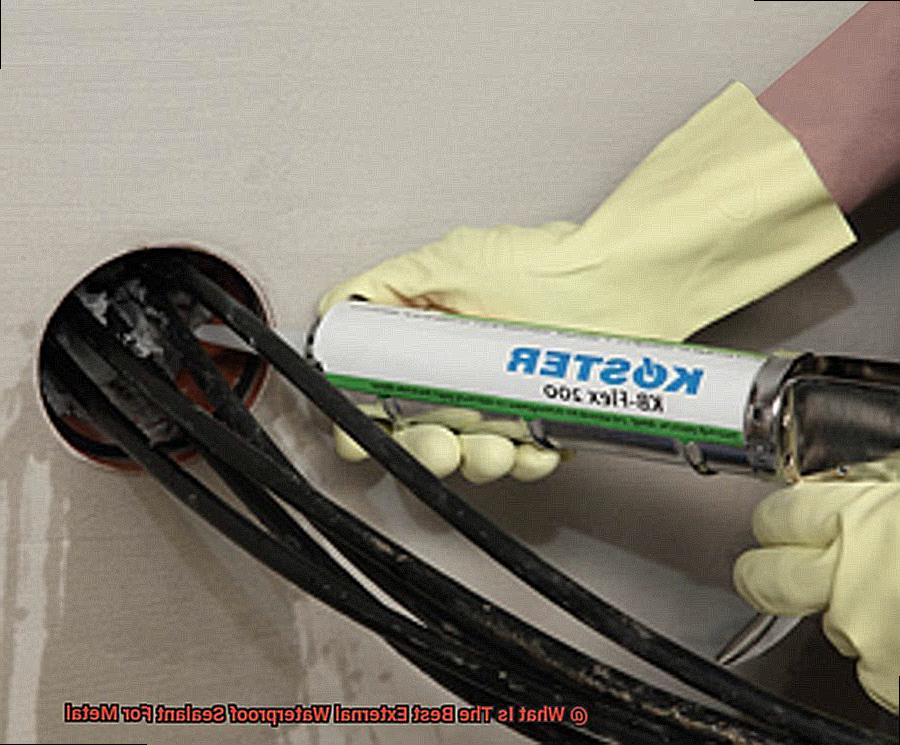
Let’s dive into some of the most common problems users encounter when applying metal sealants and how you can avoid them:
- Improper Application: One of the most significant issues with metal sealants is improper application. This problem arises when users don’t clean and dry their metal surfaces thoroughly, leading to weak adhesion and eventual failure. To avoid this issue, follow the manufacturer’s instructions closely and use an appropriate applicator for even coverage. Ensure that your surface is free of debris, dirt, or rust before applying the sealant.
- Selecting The Wrong Type Of Sealant: Another common issue with metal sealants is selecting the wrong type for your specific metal surface and environmental conditions. For instance, some sealants may not be suitable for use on certain types of metals such as aluminum or copper. Additionally, some sealants may not withstand harsh chemicals or extreme temperatures, making them unsuitable for outdoor or industrial applications. To avoid this issue, choose a high-quality metal sealant that is specifically designed for your intended use and environmental conditions.
- Inadequate Maintenance: Over time, metal surfaces can be exposed to wear and tear due to environmental factors such as ultraviolet radiation, temperature changes, and physical contact. Inadequate maintenance of the metal surface after applying the sealant can lead to damage that could compromise its effectiveness. To avoid this issue, inspect and maintain your metal surface regularly. Keep it clean and dry at all times.
B1rAfRQoPyk” >
Conclusion
In conclusion, selecting the best external waterproof sealant for your metal surfaces is a critical step in safeguarding your investment and preserving their pristine condition. With a plethora of options available on the market, it’s essential to choose a sealant that caters to your specific needs.
Silicone-based, polyurethane-based, and epoxy-based sealants are some of the most popular options available. However, before making a selection, consider factors such as the type of metal you’re sealing, environmental conditions, application method, intended use and cost.
Proper application is crucial for ensuring an effective and long-lasting seal. Before applying the sealant, ensure that the surface is thoroughly cleaned. Choose an appropriate applicator for even coverage and apply the sealant evenly over the entire surface. Allow sufficient drying time to achieve optimal results.
Improper application, selecting the wrong type of sealant or inadequate maintenance can lead to issues with metal sealants. To avoid these problems, follow manufacturer instructions closely and select high-quality metal sealants designed specifically for your intended use and environmental conditions. Regular inspections and maintenance will also help prolong the life of your metal surfaces.


